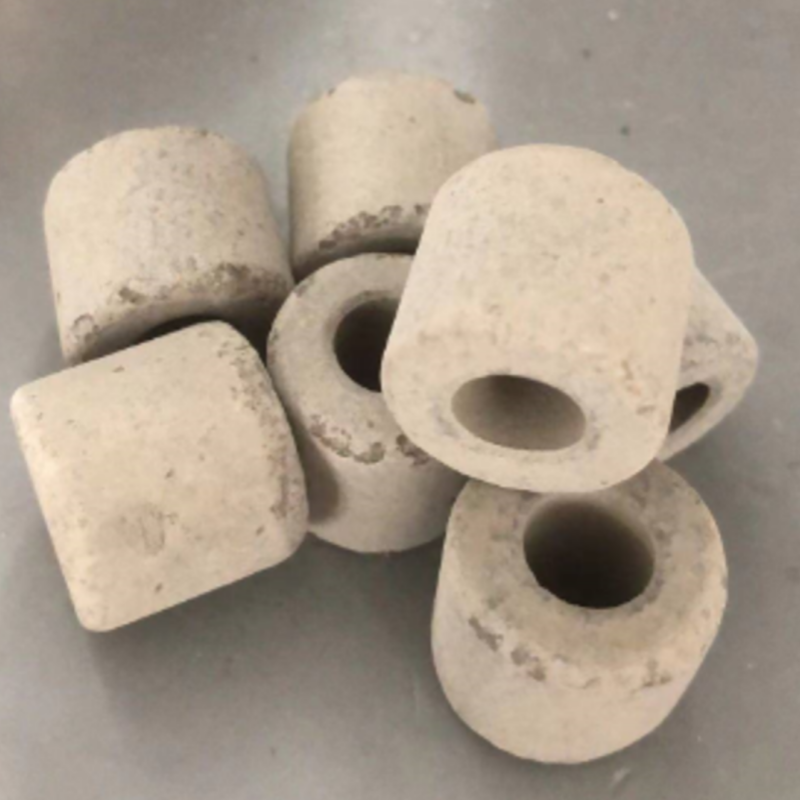Ammonia decomposition catalyst – nickel-based catalyst is a high-performance catalytic material designed to facilitate the efficient breakdown of ammonia into hydrogen and nitrogen. Engineered using advanced nickel-supported formulations, it ensures optimized reaction kinetics, superior thermal stability, and prolonged operational lifespan. This catalyst is widely used in hydrogen production, fuel processing, and industrial ammonia treatment, providing reliable performance in large-scale applications requiring precision catalytic control.
Product Overview
HTZ20N4 ammonia decomposition catalyst is a new-type catalyst with nickel as the main active component and alumina as the support, enhanced with special additives. It is widely used in the ammonia decomposition hydrogen production process, efficiently catalyzing the decomposition of ammonia gas into nitrogen and hydrogen. This catalyst offers excellent catalytic activity, stability, and high-temperature durability. After years of industrial use, it has demonstrated superior performance and has been successfully exported to North America, the Middle East, Southeast Asia, and other regions.
Key Features
- High Catalytic Activity: Provides excellent ammonia decomposition catalytic activity, ensuring a decomposition rate of up to 99.99%.
- High Strength and Heat Resistance: Capable of stable operation under high-temperature conditions without melting, shrinking, or deforming. The structure remains stable, making it suitable for high-temperature environments.
- Excellent Compressive Strength: Has a high radial compressive strength, ensuring that the catalyst particles are durable and resistant to damage during use.
- Long-Term Stability: Operates reliably at temperatures as high as 1200°C, ensuring a long service life for the catalyst.
- Low Weight Loss and Low Particle Strength Variation: Weight loss ≤ 20%, with the proportion of low-strength particles ≤ 5%, ensuring reliable and consistent performance.
Applications
- Ammonia Decomposition for Hydrogen Production: Mainly used in ammonia decomposition hydrogen production units, where ammonia is decomposed to generate high-purity hydrogen. It is widely applied in the fertilizer industry, hydrogen production, and related sectors.
- Industrial Gas Production: Can be used as a catalyst in various industrial gas production processes, especially those requiring hydrogen production.
- High-Temperature Ammonia Decomposition Processes: Suitable for ammonia decomposition processes that require high-temperature and high-pressure conditions.
| Property Name | Value |
| Geometric Size (Outer Diameter × Height × Inner Diameter) | 19 × 19 × 9 (mm) |
| Bulk Density (Kg/L) | 0.9~1.0 |
| Chemical Composition (%) | NiO ≥ 14.00, balance: Al₂O₃ + additives |
| Loss on Ignition | ≤20 |
| Radial Compressive Strength (Average) (N/particle) | ≥ 300 |
| Low-Strength Particle Percentage (particles with strength below 180 N/particle) | ≤5.0% |
| Heat Resistance Indicator | No sticking or cracking after calcination at 1300℃ for 2 hours |
| Heat Resistance Performance | Can operate long-term at 1200℃, no melting, shrinkage, or deformation at 1400℃, stable structure and good strength during high-temperature operation |
| Property Name | Value |
| Pressure | 0.01 MPa - 0.10 MPa |
| Temperature | 750℃ - 850℃ |
| Ammonia Space Velocity | 350 hr⁻¹ |
| Ammonia Decomposition Rate | 99.99% (min) |
 new material
new material








